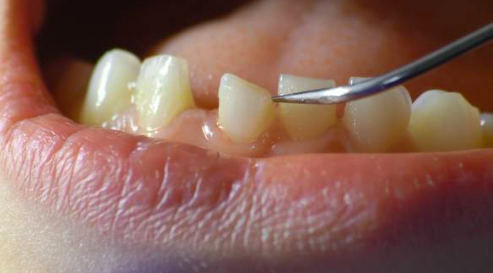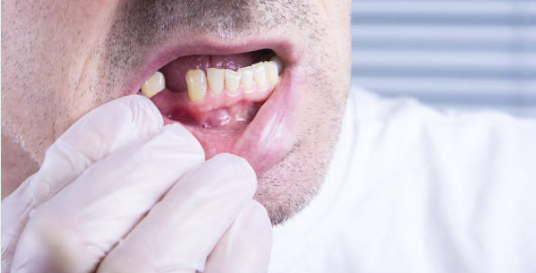Dental anesthesia is a medical technique used by dentists to numb or reduce pain in the oral region during dental procedures. It typically involves the administration of local anesthetics, such as lidocaine, to block nerve impulses and temporarily desensitize the area being treated.
Dental anesthesia ensures a more comfortable experience for patients and allows dentists to perform necessary treatments without causing significant pain.
What is dental anesthesia
Feeling anxious about an upcoming dental appointment is typical in some people due to the idea that dental treatments are painful. As patients at a dental clinic, an ideal scenario would be one without any sort of pain. A painless setting is important for dental practitioners, too, as they want to provide optimum patient comfort and safety.
Dental anesthesia permits dentists to work on the patient’s teeth and gums by providing a temporary loss of sensation in the involved mouth tissues. This also makes it easier for the dentist to work on the patient’s dental issues during each treatment session.
The lack or loss of sensation is referred to as anesthesia. In dentistry, local anesthesia is the most common form of pain control. At times, medications are used in combination with dental anesthetics to achieve a better effect. Local anesthetic drugs produce a loss of sensation in a circumscribed area of the mouth, thus inhibiting the sensation of pain from occurring during a dental procedure.
5 things you have to know about dental anesthesia
Before we delve into more details, here are the top must-knows about anesthesia used in the dental setting:
Types of Dental Anesthesia Methods
There is not one method of dental anesthesia. The type of dental anesthesia to be given to a patient depends on their needs and the procedure that must be done. The three methods of dental anesthesia are:
Local Anesthesia: This method is used for quick, minor procedures such as getting a cavity filled. A small area is numbed, and the patient stays awake and alert. The patient does not feel any pain during their treatment but can feel the pressure from dental tools.
Sedation: This is a method that helps ease a worrisome or nervous patient. This relaxes a patient and may even make them fall asleep. This is indicated for shorter and less complicated procedures wherein local anesthesia is not enough, but general anesthesia is not necessary. Sedatives are given to the patient either orally, inhaled, or through intramuscular or intravenous injection. Painkillers are also often combined with this method to achieve better results.
General Anesthesia: This method is indicated for longer, more complicated procedures. This can also be used for patients wherein local anesthesia or sedation is not enough to keep them relaxed. With this method, the patient will be unconscious throughout the process, hence it is also referred to as a medically-induced coma.
Temporary Effect
The effect of dental anesthesia goes away in a matter 30 minutes to more than 12 hours. The duration of its effect depends on the amount of anesthetic solution given to the patient as well as the complexity of the case. Some patients feel sleepy or even disoriented after a dental procedure that employed dental anesthesia. This is normal, and the patient is advised to rest until such effects dissipate.
Medical History
Informing your dentist about your complete and truthful medical history is crucial. Some medical conditions and medications can affect the potency of the anesthetic and could lead to adverse drug reactions during the procedure. Patients with liver or kidney disease, cardiovascular disease, and patients taking anticoagulants must be monitored strictly by the dentist while cautiously implementing local anesthetic techniques. The dentist might lower the dose, or add another component to the anesthetic solution depending on the condition of the patient. The same caution is applied to patients who are pregnant and the elderly.
Safety
Dental anesthesia is safe as long as it is administered by a trained and competent dentist or clinician. The dentist must know the proper dosage, the types of anesthetic agent, the application techniques, and the indications and contraindications of each drug. The dentist must be able to select the appropriate type and technique to ensure the success of anesthesia prior to the dental procedure.
Local anesthesia is not commonly associated with serious side effects, but there are still risks and potential complications. These would include allergic reactions to the anesthetic solution or any component of the solution, numbness that lasts longer than usual, and even nerve damage.
Dental Anxiety Management
For patients with dental anxiety, sedation dentistry is an option so that the patient can feel relaxed during the treatment session. Disclose how you feel with the dentist so that the proper management can be done which would lead to a positive patient experience.
With these in mind, we will further discuss more information about dental anesthesia, particularly, local anesthesia.
Types of Local Anesthetic
Local anesthetic agents in dentistry are grouped into 2 classes: amides and esters. Amides are the newer anesthetics and they generally have more favorable characteristics than esters when it comes to their safety profile and reported allergic reactions.
Both types of local anesthetics have the same mechanism of action but differ in their metabolism. Metabolism refers to how a pharmaceutical substance is transformed or processed in the body so that it can be excreted.
Amide-type anesthetics are biotransformed in the liver and subsequently excreted by the kidney while ester-type anesthetics undergo hydrolysis primarily in the plasma in blood and partly in the liver.
Amides
- Mepivacaine
- Lidocaine
- Etidocaine
- Bupivacaine
- Levobupivacaine
- Ropivacaine
The most common dental local anesthetics are Amino Amides (examples: lidocaine, mepivacaine, bupivacaine, and prilocaine). There are some amide-type local anesthetics that have an additional ester linkage, namely, articaine.
Esters
- Procaine
- Cocaine
- Chloroprocaine
- Tetracaine
- Benzocaine
Ester anesthetics are not used as much as amides but they may be utilized in topical anesthesia (benzocaine). At present, amides are prepared into dental cartridges and are readily available for injection.
Below is a short list of injectable local anesthetic agents and their description.
Lidocaine
The gold standard with which all new local anesthetics are compared. This is the most widely used and versatile local anesthetic which is 2-3 times as potent as procaine, the first synthetic injectable local anesthetic. Lidocaine has a rapid onset, meaning it takes effect quickly. It has a relatively long duration of action and is a good agent for topical application.
Articaine
Articaine is a relatively new drug (approved by the FDA in 2000) used in dental anesthesia. Compared to other local anesthetic agents, articaine has improved diffusion through the soft and hard tissues but there are reports of a higher incidence of paresthesia (tingling or feeling of “pins and needles”). This drug is not recommended for children who are under 4 years old.
Bupivacaine
Bupivacaine drug has high potency and toxicity. It has a rapid onset and a very long duration of action even without a vasoconstrictor (a useful additive in local anesthetic solutions that help improve anesthetic onset and duration, and aid in reduced bleeding)
Mepivacaine
Mepivacaine is another drug similar to lidocaine except it has no vasoconstrictor resulting in a short duration of action
Prilocaine
Prilocaine is less potent than lidocaine, and also has reported incidences of paresthesia. It can also cause methemoglobinemia (the presence of abnormal hemoglobin in the blood) when given in significantly large doses.
Topical Anesthesia
Topical anesthetics is also a component of dental anesthesia. Topical application (application of a substance on a body surface) is done on the gums around the affected tooth, and these agents can be in gel or spray forms.
Topical anesthetics numb the gums at a depth of 2-3 millimeters and this is commonly done prior to the injection of local anesthetics, so that there is little to no discomfort when the anesthetic needle pierces the patient’s mouth tissues.
Local Anesthesia for Tooth Extraction
Local dental anesthesia is generally given through the infiltration technique or block technique. The infiltration technique is commonly done for upper teeth while the block technique is frequently done for lower teeth. However, the technique must be selected not only according to the anatomical position of the teeth involved but also the number of teeth to be extracted.
There are three major types of injections that can be performed to control pain during the procedure.
Local Infiltration
This local infiltration technique involves flooding the small terminal nerve endings in the surgical area with a local anesthetic solution prior to tooth extraction. This is indicated for the anesthesia of the soft tissues surrounding the involved tooth.
Field Block
This field block technique allows for the anesthesia of larger terminal branches and is indicated for individual teeth, root areas (root apex), and periosteum of the bone. This is also indicated for anesthetizing the 6 lower front teeth.
Nerve Block
This nerve block technique involves deposition of the local anesthetic agent near the main nerve trunk which is usually distant from the operative site. This could anesthetize the mandibular or lower teeth in one quadrant (half of the arch).
Complications of Local Anesthetic Injections
Common complications when it comes to local anesthetic injections include needle breakage, hematoma or bruising, infections, soft tissue injury, prolonged anesthesia otherwise known as paresthesia, facial nerve paralysis, allergic reactions, anxiety reaction, and toxic overdose.
These complications can be prevented or managed by a knowledgeable dentist who extensively knows what or which anesthetic agents and techniques must be utilized in each case. A good understanding of anatomy is required as dentists need to know the nerve supply to the teeth involved in each dental procedure.
For patients, it is highly important that any concern is communicated with the dentist. This could improve the outcome of the treatment and allows the dentist to give better support to the patient during the recovery phase.
Benefits of Dental Anesthesia
As mentioned earlier, dental anesthesia provides pain control during dental procedures. This is beneficial to both the patient and the dentist since this results in a more relaxed treatment session and can boost patient confidence and compliance. There is better patient comfort, especially during procedures that take a long time or those that involve more invasive dental work.
For patients with a strong gag reflex, dental anesthesia can aid in reducing the gagging sensation. A sensitive gag reflex greatly interferes with dental work, and controlling it leads to a more efficient treatment session.
Dental anesthesia also makes dental visits more tolerable, especially for patients who feel anxious or scared, and even those who have difficulty sitting down during long sessions (such as pediatric patients).
Sources:
Becker DE, Reed KL. Essentials of local anesthetic pharmacology. Anesth Prog. 2006 Fall;53(3):98-108; quiz 109-10. doi: 10.2344/0003-3006(2006)53[98:EOLAP]2.0.CO;2. PMID: 17175824; PMCID: PMC1693664.
Bennett, C. R. (1978). Regional analgesia (regional anesthesia, local
anesthesia In Monheim’s local anesthesia and pain control in dental
practice (7th ed.), pp. 54-68. Missouri: C. V. Mosby Company
Bennett, C. R. (1978). Local anesthetics and anesthetic solutions In
Monheim’s local anesthesia and pain control in dental practice (7th ed.),
pp. 125-168. Missouri: C. V. Mosby Company
Krall, B. (2011). Local anesthesia manual. Loma Linda University School of Dentistry, 2012, 81.
Malamed, S. F. (2013). Neurophysiology In Handbook of local
anesthesia (6thed.), pp. 1-24. St. Louis, Missouri: Elsevier, Inc.
Mathison M, Pepper T. Local Anesthesia Techniques in Dentistry and Oral Surgery. [Updated 2023 Jun 1]. In: StatPearls [Internet]. Treasure Island (FL): StatPearls Publishing; 2023 Jan-. Available from: https://www.ncbi.nlm.nih.gov/books/NBK580480/






i have so many funny bones in myself that is why i would love to be a comedian”